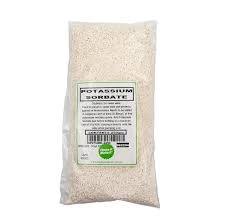
ammonium bicarbonate safe to eat
Is Ammonium Bicarbonate Safe to Eat?
Ammonium bicarbonate, often referred to as sal volatile or Baker's ammonia, is a white crystalline powder commonly used as a leavening agent in baking, particularly in traditional recipes for cookies and crackers. While it has been a staple in the culinary world for centuries, some may question its safety for human consumption. In this article, we will explore the safety, usage, and potential health effects of ammonium bicarbonate.
What is Ammonium Bicarbonate?
Chemically, ammonium bicarbonate (NH4HCO3) is a salt formed from ammonium and bicarbonate ions. It is soluble in water and has a slightly alkaline pH. In the kitchen, it acts as a raising agent by releasing carbon dioxide gas when mixed with moisture and heat, causing dough to rise. Its ability to produce a lighter texture makes it particularly useful in recipes where a crisp final product is desired.
Safety Profile of Ammonium Bicarbonate
Food-grade ammonium bicarbonate is recognized as generally safe for human consumption. The U.S. Food and Drug Administration (FDA) classifies it as Generally Recognized As Safe (GRAS), meaning it has a long history of safe use in food. However, like many food additives, it should be consumed in moderation. The typical amounts used in recipes are well within safety limits.
Despite its safety, ammonium bicarbonate can pose certain risks if not handled or used appropriately. In its powdered form, it can cause irritation to the respiratory system, and ingestion in excessive amounts could potentially lead to gastrointestinal discomfort. Therefore, following recommended guidelines and quantities in recipes is essential for safe consumption.
ammonium bicarbonate safe to eat

Common Uses in Cooking
Ammonium bicarbonate is particularly favored in the production of baked goods that require a crisp texture. When cookies and crackers are baked with this ingredient, they often turn out lighter and crunchier compared to those made with baking powder or baking soda. Additionally, it serves as a leavening agent in bakery products that do not require a prolonged rise time.
This compound is also utilized in the food industry as a pH control agent and to regulate acidity in various products, enhancing flavor and preservation. Its application extends beyond the kitchen, as it is also used in pharmaceuticals and as a leavening agent in certain types of confections.
Potential Alternatives
For those who may be hesitant to use ammonium bicarbonate, various alternatives are available. Baking powder and baking soda, though slightly different in their chemical composition, can serve as substitutes in many recipes. Baking powder combines both an acid and a base, producing carbon dioxide when mixed with moisture and heat. On the other hand, baking soda requires an acidic ingredient in the recipe to activate its leavening properties.
Conclusion
In summary, food-grade ammonium bicarbonate is safe to eat when used within the recommended amounts in recipes. It has been an integral part of baking for years, providing unique textures and flavors to various products. However, as with all food additives, it is essential to be aware of its properties and to use it responsibly. Understanding the role of ammonium bicarbonate in cooking can enhance culinary experiences while ensuring safety. If in doubt, consider consulting with a healthcare professional or a culinary expert to clarify any concerns regarding its usage in your recipes.
-
Pure Sodium Dichloroisocyanurate Dihydrate | Powerful DisinfectantNewsAug.29,2025
-
Industrial Chemicals: Quality & Purity for Every IndustryNewsAug.28,2025
-
Nitrile Rubber Honoring Strict Production StandardsNewsAug.22,2025
-
Aspartame Ingredients Honoring Food Safety ValuesNewsAug.22,2025
-
Fertilizer for Balanced Plant NutritionNewsAug.22,2025
-
Cyanide Gold Processing with High Purity AdditivesNewsAug.22,2025
-
Formic Acid in Textile Dyeing ApplicationsNewsAug.22,2025
Hebei Tenger Chemical Technology Co., Ltd. focuses on the chemical industry and is committed to the export service of chemical raw materials.
-

view more DiethanolisopropanolamineIn the ever-growing field of chemical solutions, diethanolisopropanolamine (DEIPA) stands out as a versatile and important compound. Due to its unique chemical structure and properties, DEIPA is of interest to various industries including construction, personal care, and agriculture. -

view more TriisopropanolamineTriisopropanolamine (TIPA) alkanol amine substance, is a kind of alcohol amine compound with amino and alcohol hydroxyl, and because of its molecules contains both amino and hydroxyl. -

view more Tetramethyl Thiuram DisulfideTetramethyl thiuram disulfide, also known as TMTD, is a white to light-yellow powder with a distinct sulfur-like odor. It is soluble in organic solvents such as benzene, acetone, and ethyl acetate, making it highly versatile for use in different formulations. TMTD is known for its excellent vulcanization acceleration properties, which makes it a key ingredient in the production of rubber products. Additionally, it acts as an effective fungicide and bactericide, making it valuable in agricultural applications. Its high purity and stability ensure consistent performance, making it a preferred choice for manufacturers across various industries.





